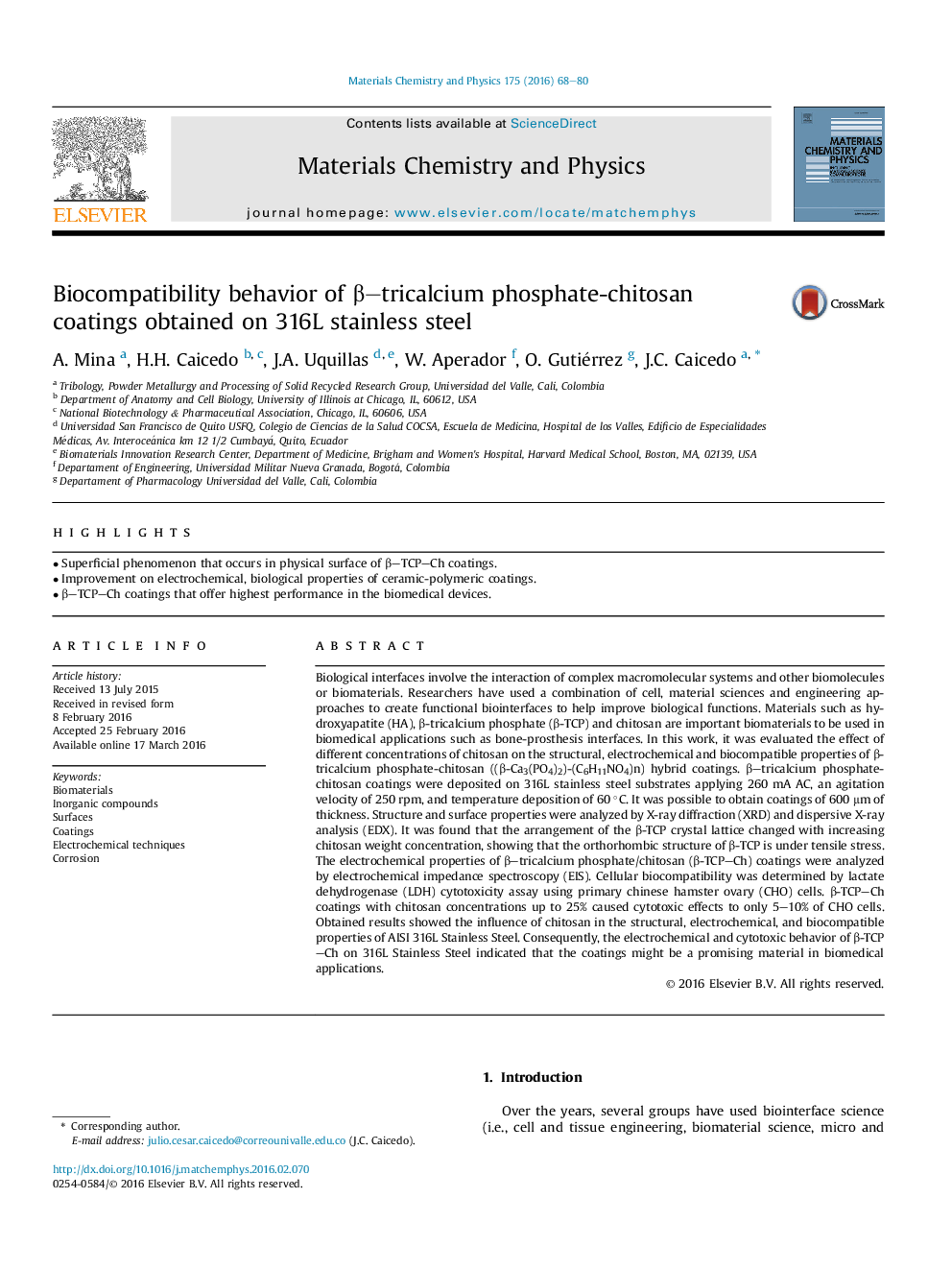| Article ID | Journal | Published Year | Pages | File Type |
|---|---|---|---|---|
| 1520942 | Materials Chemistry and Physics | 2016 | 13 Pages |
•Superficial phenomenon that occurs in physical surface of β–TCP–Ch coatings.•Improvement on electrochemical, biological properties of ceramic-polymeric coatings.•β–TCP–Ch coatings that offer highest performance in the biomedical devices.
Biological interfaces involve the interaction of complex macromolecular systems and other biomolecules or biomaterials. Researchers have used a combination of cell, material sciences and engineering approaches to create functional biointerfaces to help improve biological functions. Materials such as hydroxyapatite (HA), β-tricalcium phosphate (β-TCP) and chitosan are important biomaterials to be used in biomedical applications such as bone-prosthesis interfaces. In this work, it was evaluated the effect of different concentrations of chitosan on the structural, electrochemical and biocompatible properties of β-tricalcium phosphate-chitosan ((β-Ca3(PO4)2)-(C6H11NO4)n) hybrid coatings. β–tricalcium phosphate-chitosan coatings were deposited on 316L stainless steel substrates applying 260 mA AC, an agitation velocity of 250 rpm, and temperature deposition of 60 °C. It was possible to obtain coatings of 600 μm of thickness. Structure and surface properties were analyzed by X-ray diffraction (XRD) and dispersive X-ray analysis (EDX). It was found that the arrangement of the β-TCP crystal lattice changed with increasing chitosan weight concentration, showing that the orthorhombic structure of β-TCP is under tensile stress. The electrochemical properties of β–tricalcium phosphate/chitosan (β-TCP–Ch) coatings were analyzed by electrochemical impedance spectroscopy (EIS). Cellular biocompatibility was determined by lactate dehydrogenase (LDH) cytotoxicity assay using primary chinese hamster ovary (CHO) cells. β-TCP–Ch coatings with chitosan concentrations up to 25% caused cytotoxic effects to only 5–10% of CHO cells. Obtained results showed the influence of chitosan in the structural, electrochemical, and biocompatible properties of AISI 316L Stainless Steel. Consequently, the electrochemical and cytotoxic behavior of β-TCP–Ch on 316L Stainless Steel indicated that the coatings might be a promising material in biomedical applications.
